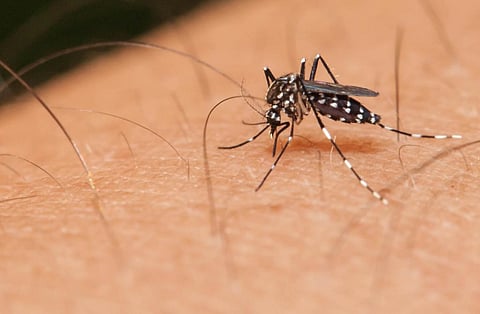

Building resistance against insecticides is an evolutionary problem affecting progress in the fields of health and agriculture, among others.
But scientists at the University of Exeter and University of California have suggested a strategy to use evolution of mosquitoes to our advantage, for fighting malaria. They have proposed that insect repellents and insecticides be used in coordination to act against malaria-transmitting mosquitoes—the ones that have evolved to bite humans indoors, at night.
Here’s how it will work: Indoor residual spraying with insecticides is a common tool in public health campaigns against malaria. The new strategy suggests that insect repellents should also be sprayed in indoor areas treated with insecticides. As a response, mosquitoes that are not repelled enter the premise, get exposed to the insecticide (and killed, most likely). Mosquitoes that are repelled become more likely to survive and reproduce. Their offspring can inherit the same trait of repellence, which is desirable to humans.
One of the authors of the study, Penelope Lynch, associate research fellow at the University of Exeter, says, “With each generation, therefore, the proportion of mosquitoes repelled will increase, and a mediocre repellent which initially affected only a small proportion of mosquitoes will become increasingly effective against the local mosquito population.”
Malaria is one of the most widespread vector-borne diseases with 3.2 billion people—almost half the world’s population—at risk of acquiring it. According to the latest WHO estimates, released in December 2015, there were 214 million cases of malaria in 2015 and 438 000 deaths. Fifteen countries, mostly in sub-Saharan Africa, account for 80 per cent of malaria cases and 78 per cent deaths globally. As per the WHO, mosquito resistance to pyrethroids has emerged in many countries. In some areas, resistance to all 4 classes of insecticides used for public health has been detected.
The new strategy has a possible solution for the building resistance. It explains that the surviving, repelled mosquitoes do not come in contact with the insecticides, slowing the spread of resistance.
Pushing mosquitoes away from their preferred indoor-feeding behaviour has the potential to control spread of malaria in more than one ways. Disrupting their natural behaviour may result in higher mortality for repelled mosquitoes. Increased mortality can reduce the number surviving long enough to give an infectious bite, as mosquitoes can only spread malaria once mature.
It is also likely that if mosquitoes are pushed away from sleeping humans, they may instead feed on livestock or other animals, reducing malaria transmission to human beings. “Therefore mosquitoes which evolve to be repelled away from houses would be expected to transmit malaria less well than those following their natural behaviour and coming inside to bite people at night,” adds Lynch.
But is the strategy effective? Some unintended operations of such mechanisms have been observed: mosquito in areas where indoor insecticides are heavily used, have evolved to avoid proximity with insecticides, and in some cases to move to outdoor biting. “This has been characterised as 'behavioural resistance', so here we are seeking to use the same processes to drive the inevitable evolution of resistance in order to generate change which will actually help rather than hurt public health efforts to combat malaria,” Lynch says.